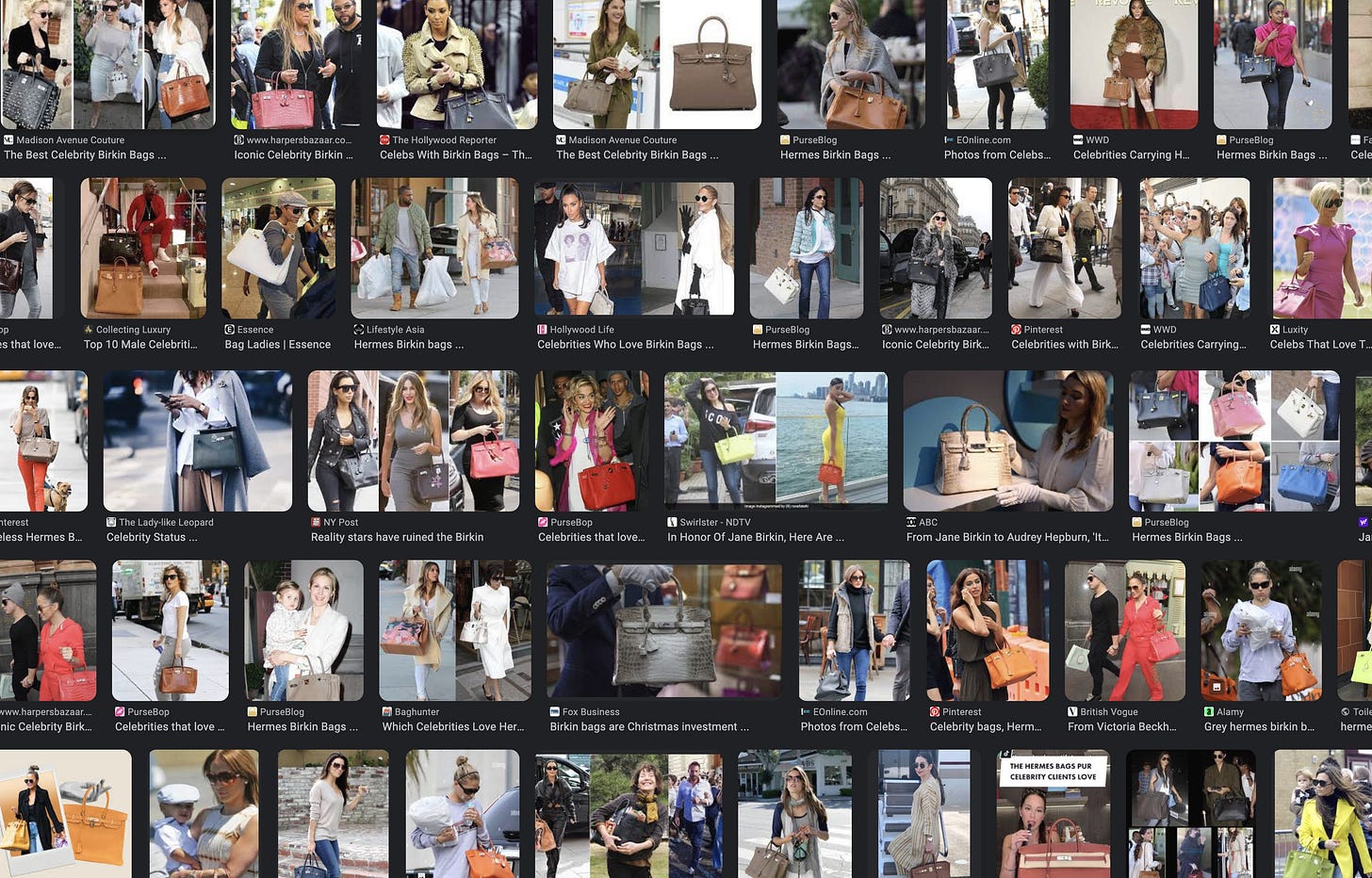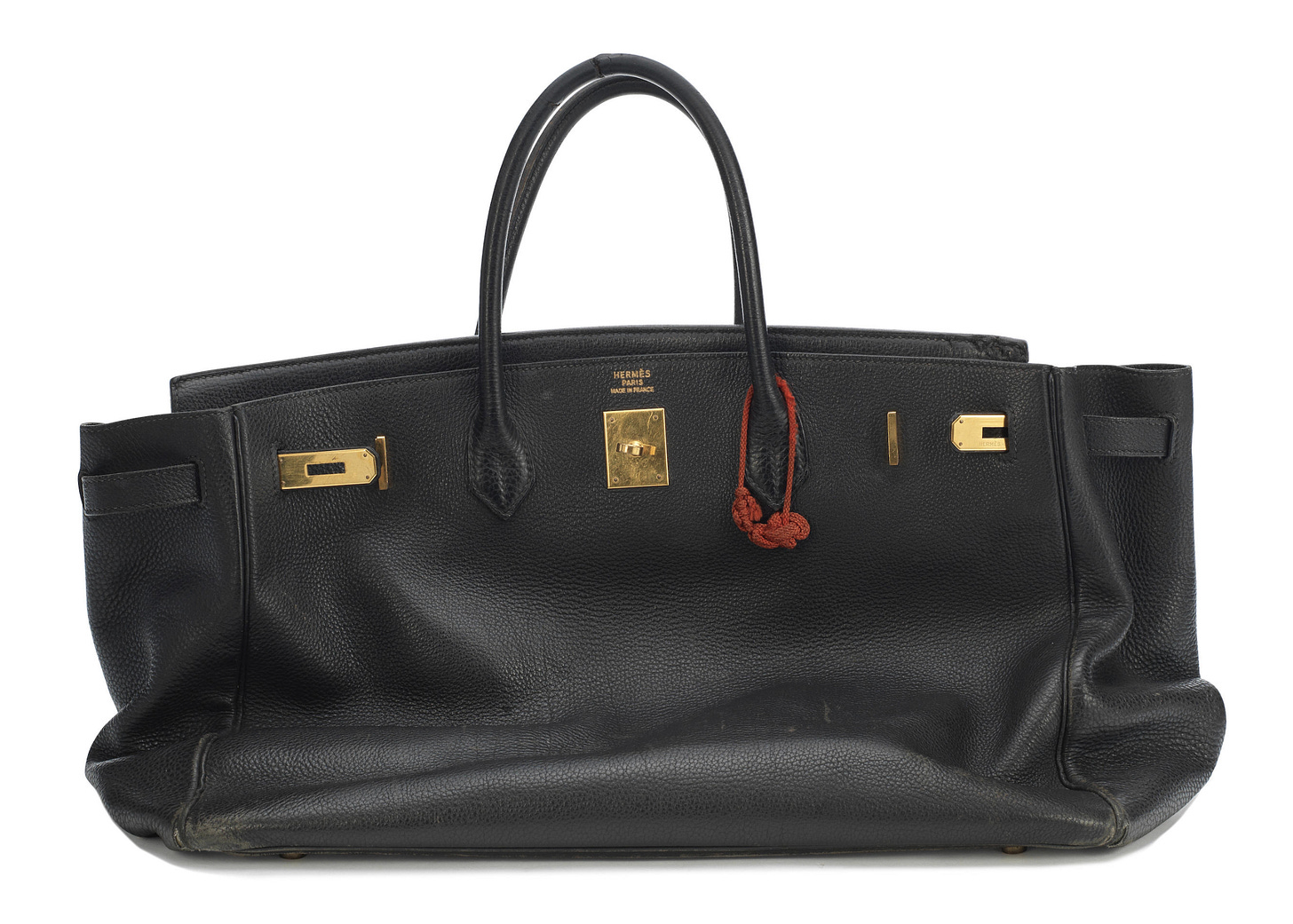Few items can rival the prestige and desirability of Hermès' Birkin and Kelly bags. These handbags are far more than mere accessories; they represent the pinnacle of opulence, craftsmanship, and exclusivity. The allure of these bags has only intensified in recent years, thanks in large part to the patronage of celebrities. High-profile figures from the worlds of film, music, and fashion have been frequently spotted with these bags, elevating their status to cultural icons. The visibility of these bags in the hands of the elite has created a unique intersection where fashion, celebrity influence, and investment converge. The Birkin and Kelly bags are renowned for retaining their value and, in many cases, appreciating over time. This has turned them into sought-after items for collectors and investors alike. In many instances, the resale value of these bags can far exceed their original retail price, driven by their limited availability, celebrity association, and the timeless appeal of the Hermès brand. As such, the Birkin and Kelly bags transcend traditional fashion accessory status. They are at the crossroads of haute couture and high finance, symbols of a rarefied world where luxury and celebrity create a potent mix of desire and exclusivity. This unique combination ensures that the Birkin and Kelly remain not just relevant but coveted in the fast-paced, ever-evolving worlds of luxury and fashion.
The story of the Hermès Birkin and Kelly bags are rooted in Celebrity culture. The Birkin’s beginnings unfold like a tale from the annals of fashion legend, starting in 1984 with a chance encounter on an airplane between British actress and singer Jane Birkin and Hermès chief executive Jean-Louis Dumas. Legend has it that Birkin, struggling to fit her straw bag into the overhead compartment, spilled the contents, leading to a conversation with Dumas about the difficulty of finding a leather weekend bag she liked. This conversation sparked the creation of the Birkin bag, a spacious yet elegant leather bag that perfectly melded practicality with luxury. The Kelly bag, the elder sibling of the Birkin, has its own storied history, closely entwined with the glamour of Hollywood and royalty. Originally designed in the 1930s, it was renamed after Princess Grace Kelly of Monaco, who used it to shield her pregnancy from the prying eyes of the paparazzi in the 1950s. This moment, captured in a famous photograph, catapulted the bag to international fame, and it has since been associated with the grace and elegance of the Princess. Meticulously handcrafted, each bag can take up to 48 hours of work to complete, involving a painstaking process that has been perfected over decades. The production involves a small army of skilled artisans who individually create each bag from start to finish. This attention to detail ensures that each bag is not only beautiful but also durable, designed to last for generations.
The relationship between celebrities and their Hermès bags is more than a mere preference for a fashion accessory; it's a public spectacle that epitomizes the intersection of high fashion and celebrity culture. The fascination with these bags among the rich and famous has significantly influenced their status as symbols of luxury and exclusivity. Victoria Beckham, a fashion icon, designer, and former Spice Girl, is known to own an astounding collection of Birkins. Similarly, American reality TV family and businesswomen the Kardashian/Jenners have frequently been in the limelight with a multitude of Birkins. Their collections include several custom-painted pieces, turning these already exclusive bags into one-of-a-kind works of art. When celebrities step out with their Birkins and Kellys, they're not just carrying a bag; they're making a statement. Each appearance is often meticulously documented and analyzed in fashion magazines and blogs, creating a ripple effect that influences trends and consumer preferences. This phenomenon has enlivened these bags, giving their collectors and admirers a sense of belonging to an exclusive echelon of society. The celebrity love affair with Hermès bags is a testament to their enduring appeal, as Hermes is known to never give away Birkins or Kellys. Each celebrity collection was assembled like every other Hermes collection, through hard work and years of hunting.
The association of celebrities with Hermès Birkin and Kelly bags has had a profound and dramatic impact on their resale value, enhancing them as objects of investment as much as fashion. When a limited edition Birkin or Kelly is seen on the arm of an A-list celebrity, it instantly becomes more coveted; a piece of luxury that fans and collectors yearn to possess. This heightened demand drives up resale values, particularly for limited edition or rare models. The soaring resale prices are driven by both tangible and intangible factors. On the tangible side, the quality, craftsmanship, and condition of the bag are paramount. On the intangible side, the celebrity factor plays a significant role. The history of the bag – who else owns it, where it was seen, and the media coverage it received – all contribute to its perceived value. This trend underscores a broader shift in the luxury goods market, where the value of an item is increasingly determined by its cultural significance and its connection to the world of celebrity. Bags that celebrities themselves decide to resell, for any number of reasons, can sometimes fetch exceptional sums at auction, though this is generally reserved for bags belonging to celebrities in the top tier of global consciousness and appeal, such as Jane Birkin herself, or Elizabeth Taylor.

In the digital age, social media platforms have transformed into virtual runways, where celebrities and influencers showcase their latest fashion acquisitions to millions of followers. Platforms like Instagram, Twitter, and TikTok have become pivotal in shaping trends and influencing consumer behavior, particularly in the luxury fashion market. When a celebrity or influencer posts a photo or video featuring a coveted Hermès Birkin or Kelly bag, it can instantly capture the public's attention, often going viral and significantly impacting demand. These social media posts are more than mere displays of personal style; they are powerful endorsements that can dictate fashion trends and influence the desirability of luxury items in the resale market. Fans and collectors, eager to emulate their style icons, turn to the resale market to acquire these bags, often willing to pay premium prices. The phenomenon of virtual endorsements extends beyond traditional celebrities to include a wide range of influencers and fashion bloggers. These individuals often have highly engaged audiences who look to them for inspiration and guidance on fashion trends. When these influencers feature a Birkin or Kelly bag in their posts, they contribute to the narrative of the bag as a must-have item, further fueling demand. Moreover, social media has democratized fashion, allowing for a more direct and immediate interaction between celebrities, influencers, and their audiences. Followers can react, comment, and share these posts, increasing their reach and influence. This interactive aspect of social media amplifies the impact of celebrity endorsements, making them a critical factor in the valuation of luxury items like Birkin and Kelly bags in the resale market. The power of social media in shaping perceptions and driving demand has become a crucial element in the luxury fashion industry. Often resellers will emulate the posting style of influencers to tighten engagement with, and therefore demand for the bags they have for sale. It has turned platforms like Instagram and Twitter into influential spaces where the desirability and value of high-end products like Hermès bags are continuously being negotiated and redefined. In this context, a post featuring a Birkin or Kelly is not just a showcase of personal taste but a strategic move that can have significant implications for market trends and resale values.
The profound impact of celebrity culture on the Hermès market raises several critical questions about consumption patterns, sustainability, and the economics of luxury goods. The frenzy and fervor to own what celebrities possess have ushered in a unique cycle of consumption, where acquiring these bags becomes a statement of status and style. However, this trend also highlights the issue of sustainability in the luxury fashion sector. The desire to own the latest or most unique Birkin or Kelly, often flaunted by celebrities, can lead to a pattern of acquiring new items while forgetting older ones, despite their enduring quality and style. This behavior may seem at odds with growing concerns about sustainable practices in fashion, where the emphasis is increasingly on longevity and reducing waste, but in reality, Hermes bags are never wasted. If they are forgotten in the back of closets, they are inevitably eventually rediscovered and reappreciated. If they are resold, their journey begins anew with a fresh owner. From an economic perspective, Hermès certainly benefits from the high demand driven by celebrity endorsements and the associated desire among consumers to mirror their style icons. This demand ensures that their products remain highly sought after, commanding premium prices both in retail and in the secondary market. However, the challenge for Hermès is to balance this demand with the need to maintain the exclusivity and prestige of their brand. If these luxury items become too accessible or commonplace, they risk losing their allure and status as symbols of ultimate luxury and exclusivity. Hermes approaches this by only selling its Birkin and Kelly bags to valued repeat customers, ensuring sales of their other products remain strong even as new customers may only be coming in for the Birkin or Kelly. The intersection of celebrity culture and the Hermès market thus presents a complex scenario. How Hermès and other luxury brands address these issues will be crucial in defining their role and reputation in the evolving landscape of luxury fashion.
The influence of celebrities on the resale market for Hermès Birkin and Kelly bags is a phenomenon that speaks volumes about the interplay between luxury, fashion, status, and popular culture. This celebrity endorsement has not only heightened the bags' desirability but has also played a crucial role in maintaining their high resale value. However, this glittering market, underpinned by the allure of exclusivity and the prestige of the Hermès brand, is not without its challenges. As the demand for these luxury items grows, partly driven by their visibility in celebrity circles, there are rising concerns about ethical consumption and sustainability in the luxury fashion industry. The fervor to own a piece of this exclusive world can lead to patterns of excessive consumption and a disregard for sustainable practices, though Hermes is largely insulated from those concerns thanks to the unyielding quality of its products and the unchanging timelessness of its designs. Moreover, the market for Birkin and Kelly bags faces the challenge of navigating the complex dynamics of supply and demand. The high demand and limited supply of these bags, a strategy that maintains their exclusivity, can sometimes lead to questionable practices in the secondary market, including inflated pricing and exclusivity that borders on inaccessibility for the average consumer. As the future of this market unfolds, it will need to balance the shimmering appeal of luxury and exclusivity with the increasingly important considerations of ethical consumption. This will be crucial in ensuring that the luxury resale market remains vibrant and relevant in an ever-evolving global fashion landscape.








